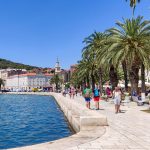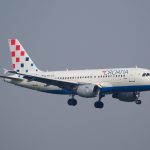As Novac/Veljko Ostojic writes on the 8th of April, 2019, after almost a decade of high growth rates in Croatia’s domestic tourism indicators, the dominant feature of this season, at least from the market’s point of view, is uncertainty. The only thing we can be sure of, however, is the rapid growth period behind us. Facing Croatia is a period of struggle for each tourist owing to extremely turbulent broadcasting markets.
Such a destiny is shared by all Mediterranean markets with the exception of Turkey, and tourism in the Mediterranean as a whole is influenced by two dominant trends.
The first concerns the general insecurity in the European Union’s economy, driven by the slowdown in individual national economies, primarily in big players such as Germany and Italy. An additional element that generates general uncertainty is the potential of Brexit (should it ever happen at all), the real effects of which at this stage can’t really be estimated. These movements deter people from spending too much money, which is felt by the lack of bookings and reservations. In the first two months of 2019, the annual cumulative booking from Germany to Croatia was a little less when compared to 2018, while the decline in British tourist reservations throughout the Mediterranean was much more apparent, with Brits booking their holidays in the sun in advance being 10 percent lower on average than last year.
The second trend is the return of an old tourism king, Turkey, which has been a source of discomfort and nerves for Western Mediterranean countries, especially Spain, especially with its policy of subsidised travel arrangements last season, this season, Turkey is set to continue to record high growth rates of reservations from key European emission markets.
Such is an environment that defines the prospects of Croatian tourism not only this year, but over the next few years. The Croatian Tourism Association decided to quantify the effects of these trends on the expectations of Croatian tourist companies and the results of that survey were published in the first issue of Tourism Impulse, which will be published continuously every quarter. They surveyed the fifteen of Croatia’s largest tourism companies, which account for 81 percent of the country’s hotel sector.
The survey has shown that Croatian travel companies are experiencing revenue declines on one hand, and rising costs, primarily regarding labour, on the other. Croatian tourist companies are expecting slower annual revenue growth by 11.4 percent when compared to last year. Without changing the business environment in which Croatian tourism operates, this will result in a reduction in profitability and of course, a reduction in investment potential. With Croatia’s damning reputation among foreign investors on the world stage, this really is the last thing it needs to seek to encourage.
The rather damp expectations of some of Croatia’s largest tourist companies also show a drop in profitability this year by almost five percent and, as a consequence, the reduction of investments this year by a concerning twenty percent. Over the next two years, a further decline in investment is expected at a rate of 33 percent when compared to the periods in 2018 and 2019.
Reducing investment potential in tourism has a significant impact on the long-term prospects of Croatia’s tourism. It is clear to all that in the long-term, Croatia must compete exclusively with quality rather than price. Reducing prices as much as possible to compete with Turkey on a surface level will only destroy the Croatian coast and Croatia’s tourism sector as a whole. This isn’t an option.
To be able to really compete with quality, apart from having determination to do so, it is crucial to attract and stimulate investments, something Croatia lacks in, and rather severely.
For that, Croatia will have to make numerous significant changes to its business framework. Today, Croatia is one of the least competitive in investing in tourism in the entire Mediterranean and has the highest tax burden of them all, especially if we look at the VAT rate. Spain, France and Italy have a reduced their VAT rates to help boost tourism. Croatias VAT rate, however, is 13 percent for hotel accommodation and 25 percent for hospitality services. Only Denmark is operating anywhere close to that in the whole of Europe, and one can hardly compare Croatia to Denmark.
Tourism directly and indirectly generates nearly twenty percent of Croatia’s GDP, the sector generated eleven percent of all investments in Croatia. There is a lot of discussion about the optimal structure of the economy in which tourism makes up such a big part of it, and this, like many such discussions in Croatia, is often a waste of time. In a situation where tourism is experiencing significant growth rates and becoming an increasingly important factor in the receptive Mediterranean market, such discussions are quite unnecessary.
Of course, the priority requirement for Croatia’s tourism growth is to boost investment, which will continually increase the country’s overall quality.
If VAT on the entire tourist service is reduced to the level of Croatia’s competitive countries, tourism can attract an additional three billion euros of investment, it can increase employee salaries by twenty percent and continue to rise over the next few years, which will further stabilise budget revenues and raise the standard life in Croatia in general.
Make sure to follow our dedicated business, lifestyle and travel pages for much more.








